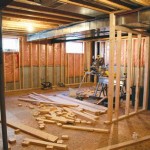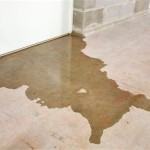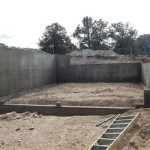How to Insulate Concrete Basement Walls
Insulating basement walls is a DIY-friendly project that can significantly improve a home's energy efficiency, comfort, and value. By reducing the conductive transfer of heat in and out of the basement, insulation helps to keep the space warmer in winter and cooler in summer, reducing heating and cooling costs and improving overall comfort.There are several different types of insulation materials available, each with its own advantages and disadvantages. When choosing an insulation material, it is important to consider the following factors:
- R-value: The R-value measures the insulation's resistance to heat flow. The higher the R-value, the better the insulation. For basement walls, an R-value of at least 15 is recommended.
- Material: Insulating materials are typically made from fiberglass, cellulose, or rigid foam. Fiberglass and cellulose are less expensive than rigid foam, but they are also less effective. Rigid foam is the most effective insulation material, but it is also the most expensive.
- Thickness: The thickness of the insulation material will also affect its R-value. The thicker the insulation, the higher the R-value.
Once you have chosen an insulating material, you can begin the installation process. Here are the steps involved:
1.Prepare the basement walls:
Remove any dirt or debris from the walls and brush off any loose particles. If there are any cracks or holes in the walls, fill them with a concrete patch or caulk. 2.Apply the insulation material:
You can apply the insulation material either directly to the concrete walls or by attaching it to a framed wall. If you are applying the insulation directly to the walls, use an adhesive or mechanical fasteners to hold it in place. If you are attaching the insulation to a framed wall, use nails or screws to secure the framing to the walls and then install the insulation between the framing. 3.Cover the insulation:
Once the insulation is installed, cover it with a vapor barrier to prevent moisture from entering the insulation and causing it to lose its effectiveness. The vapor barrier can be made of plastic sheeting or a specialized vapor barrier material. 4.Finish the basement:
Once the insulation and vapor barrier are in place, you can finish the basement as desired. You can install drywall, paneling, or other finishing materials.Insulating concrete basement walls is a relatively simple project that can have a significant impact on the comfort and energy efficiency of a home. By following these steps, you can easily insulate your basement walls and enjoy the benefits for years to come.

How To Insulate A Basement Wall Greenbuildingadvisor

Three Ways To Insulate A Basement Wall Fine Homebuilding

How To Insulate Your Basement S Concrete Walls The Seattle Times

Doe Building Foundations Section 2

Insulation For A Conditioned Basement Greenbuildingadvisor

Doe Building Foundations Section 2

Healthy Basement Insulation Systems Quality Built Basements Llc

Etw Foundation 4 Xps Insulation On The Exterior Of Wall Buildingscience Com

How To Insulate Basement Walls True Value

How To Insulate Your Basement Like A Pro
See Also








